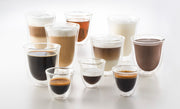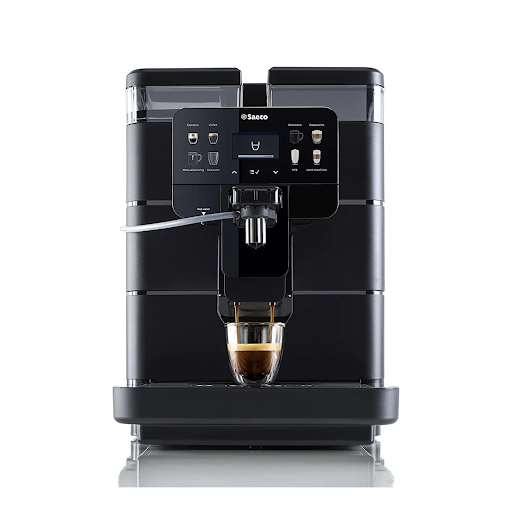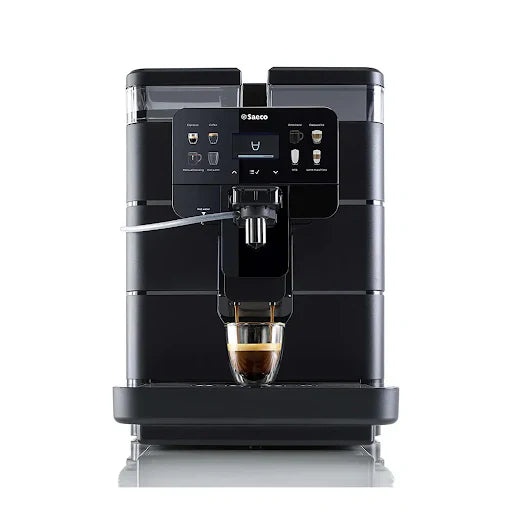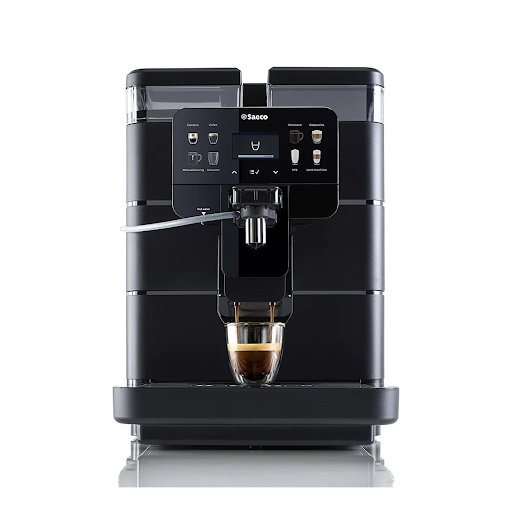Fully Automatic Espresso Machines: FAQs and Valuable Information You Need to Know
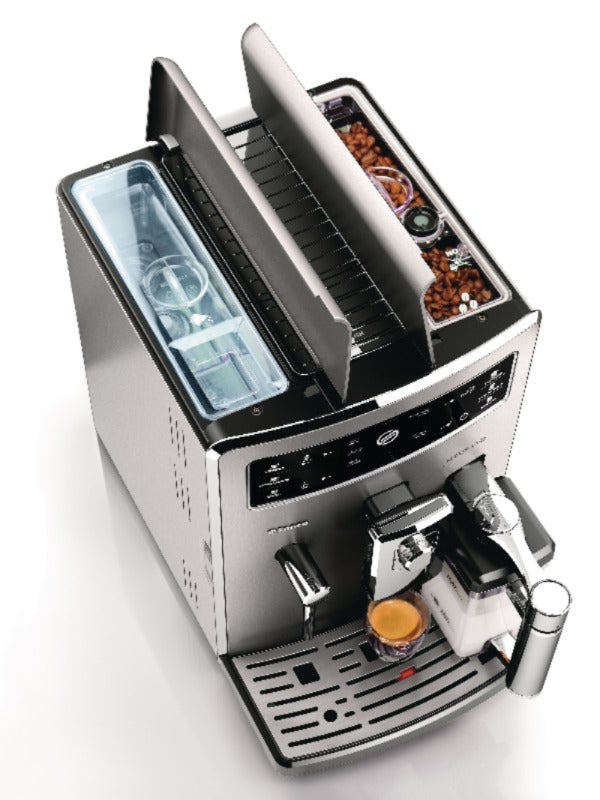
Buying a superautomatic espresso machine can be overwhelming. There are many brands, models, and features. In addition, there is a whole vocabulary to sift through, and the price ranges can vary drastically. There are some misconceptions out there too. This blog will help demystify some of the misconceptions out there.
What is an Automatic Espresso Maker?
Automatic Espresso Makers, Superautomatics or Fully automatics as they are called are espresso machines that are defined by their bean to cup capabilities. With a push of a button, the machine will grind a specified quantity of espresso beans, tamp the ground coffee, heat water on demand, and deliver a specified volume of coffee. Additionally, superautomatics will eject spent coffee grinds known as dregs, into a dump box. Typically, superautomatics can make 10 to 20 consecutive coffees, depending on the machine, before additional beans and/or water must be added or the dump box needs to be emptied.
Do superautomatics provide the customization of coffee I expect?
Misconception: Superautomatics are limited when it comes to controlling the coffee you get.
Since superautomatics came onto the market in 1984, they have evolved in their functionality and offerings. Current models offer a greater opportunity for consumers to customize the coffee they make.
Some features which fully automatics have include:
- greater control of grind settings and volume of coffee dispensed,
- ability to use whole bean and bypass doser in order to make decaf, and
- ability to rinse machine at any time to maximize temperature.
Additionally, there is functionality to put into memory the coffee profiles for each user. Then, of course there are of the choices with respect to milk frothing options – milk wand, pannarello, auto foamers, milk carafes, and milk cups.
Finally, there is the convenience of being able to program your machine through Bluetooth technology, so you can make your coffee with your device while sitting on the couch.
Today’s superautomatics are not limiting at all. In fact, they provide a greater range of personalization and the product is consistent regardless of the user.

What is meant by self-cleaning?
Misconception: Self-cleaning requires absolutely no work on the part of the consumer.
We will start off by saying that cleaning and maintaining a superautomatic is fairly straightforward, easy to complete, and requires minimal effort…but the term self-cleaning can be taken very literally.
There is absolutely no espresso machine that requires zero maintenance. This is true of any type of espresso machine – be it manual, prosumer, commercial or even stovetop. When used in the context of a superautomatic, the term self- cleaning simply refers to the rinse cycle that activates when the machine is turned on and turned off.
This rinse cycle serves to flush the brew unit and the dispensing head. Rinsing is important because it purges any residual coffee and ensures the machine is ready to deliver the next coffee. The rinse cycle that activates when the machine is turned on serves to pre-heat the brew unit, and the dispensing head to maximize temperature of the first espresso.

Some marketers use the term self-cleaning in reference to the descaling functionality. Even when talking about descaling, machines will require that the consumer put descaling solution in the water tank and activate the descaling function. In most newer models, the process of moving through the descaling steps is executed by the machine. However, at the end of the descaling cycle, water tanks need to be rinsed and fresh water added before the rinse cycle can be activated. While most of the descaling process is done by the machine, there is still some consumer involvement in the process.
How many bars of pressure are needed?
Misconception: More bars of pressure means a better coffee.
Most espresso machines, including superuatomatics, manual, and most prosumer machines on the market use one of three brands of pumps. The most popular being an ULKA pump. All of these pumps are equally rated. They all deliver 15 bars of pressure, which is the adequate amount of pressure to produce an optimal espresso.
Only capsule machines claim to have 18 bars of pressure; however, they utilize the exact same pump. In these cases, it is the brew chamber has been manipulated to maximize pressure so that an espresso can be extracted from the perforated capsule. This extra pressure has no bearing on the final product.
Is a removable brew unit better than a fixed brew unit?
Misconception: One brew unit design is better than the other.
There are pros and cons to each type of brew unit design. In this case, it is not that one is better than the other. Instead, the consumer will need to evaluate their comfort level in machine maintenance. Both styles have their pros and cons.
Pros to a Removable Brew Unit:
- Brew unit is easy to remove
- Brew unit can be rinsed with warm water
- Brew unit can be rebuilt, repaired or replaced
- Minor maintenance can be completed by the consumer themselves (i.e. changing o-rings, cleaning filter screens, lubricating brew units and o-rings, as well as replacing them)
Cons to a Removable Brew Unit:
- Consumers may not be comfortable removing brew unit and in the process; they may get the machine and/or brew unit of out sync causing difficulty in reinserting the brew unit into the machine
- If a brew unit is not properly cleaned and lubricated on a regular basis, it will seize up and not produce coffee or malfunction
Pros to a Fixed Brew Unit:
- Almost impossible for brew unit to become misaligned
- Maintenance is done with specifically formulated tablets
- Reliable
Cons to a Fixed Brew Unit:
- In case of an issue, it must go to a repair facility in order to open up the machine and access the brew unit
- Cost of service is more expensive
- Reoccurring cost of cleaning tablets
Which is better a ceramic or metal burr grinder?
Misconception: One material is better than the other.
Here again, there is no definitive response. The main selling feature of the ceramic grinder is that the heat it creates during the grinding process is negligible. This is important because coffee purists will argue that the profile of coffee beans and flavor will be compromised with excess heat applied during grinding. However, if you are making only a few coffees consecutively, even a metal burr grinder won’t heat up to any significant extent as to impact the coffee bean profile.
Ceramic burrs are slightly more durable than metal ones. However, if a foreign object enters the grinder, ceramic burrs are more likely to shatter.
Ceramic grinders are typically quieter than metal grinders. The bottom line is don’t necessarily shy away from a machine if it contains a metal burr grinder. There are still several models and brands that use metal burr grinders which are proven products.
Are superautomatics more expensive to repair?
Misconception: Because of the electronics and technology in superautomatics, they will cost more to repair.
The cost to repair superautomatics is no more than repairing either a manual or prosumer espresso machine. The time required to dismantle and rebuild manual and prosumer machines is greater; therefore, you can expect to pay more for labor costs. The recent popularity of superautomatics ensures that the cost and availability of parts is comparable to the other styles.
In this article we have tried to address some of the most popular misconceptions about superautomatic espresso machines. If there is any other question you have about automatic espresso makers or any other style of espresso machines, feel free to contact us.




